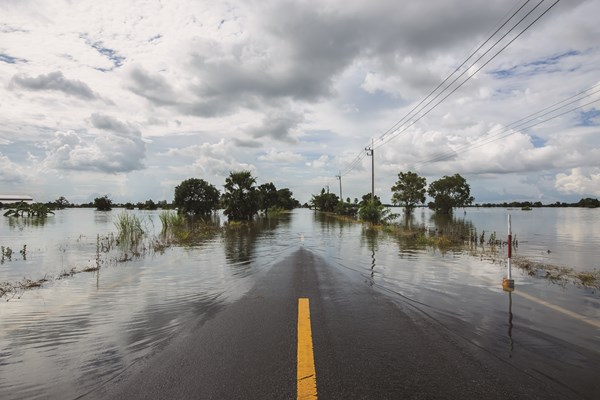“Is the scene safe?” That’s something we’re taught to ask during our earliest days of medical school, as we learn how to perform basic life support.
While the context of that question is mostly about our physical safety as providers, it can also be asked in a larger sense: What else is going on in the environment around my patient? No patient or case exists in a vacuum, and understanding how the environment can affect the care we provide can increase our chances of success. This goes for the hospital environment as well as the greater environment around us. And this is where the One Health approach comes in.
The One Health approach focuses on the interconnections of human health, environmental health, and animal health, and recognizes that all of these factors need to be addressed to optimize the overall health of the world in which we live and work.1 This concept is not new, but it is increasingly important that we as practitioners of medicine recognize the importance of the close connections our communities and patients have to the animals around us and our shared environment. For emergency medicine physicians, the impacts of this approach are far reaching, from increased antibiotic resistance and water contamination to improvements in mental health that come from human-animal bonding.
As we examine how these elements affect the communities that we care for, there is one complicating factor that cannot be ignored: climate change. The impacts of a changing climate on human health are numerous and will significantly influence physical health, mental health, and social stability.2 The effects of these shifts on vector-borne and waterborne infectious diseases offer an excellent example to illustrate the important interconnections at play in our ecosystems — and why we, as emergency physicians, should pay attention.
Dengue, a vector-borne disease with four distinct serotypes and severity that can range from asymptomatic to severe or fatal, has had a 30-fold increase in incidence in the past 50 years. In addition to changes in the climate, this increased caseload has been connected to population growth, urbanization, increased travel, inadequate public health infrastructure, and ineffective vector control.3 Transmission of dengue occurs primarily by the mosquito species Aedes aegypti, and the transmission cycle of the virus has been shown to be strongly determined by climatic factors.3Temperature, humidity, and rainfall have direct effects on not only range, density, and vector efficiency of A. aegypti, but also on the rate of virus multiplication and transmission. Increased temperature extends the global range of A. aegypti, increases the population density of the mosquito within that range, and, along with changes in relative humidity, decreases the length of the A. aegypti life cycle.3 This shortened life cycle produces smaller adult mosquitos with less energy reserve, requiring them to feed more often and thus increasing the biting rate of the mosquitos — and the more the mosquitos bite, the higher the chances of dengue transmission3. While the specific mechanisms of this shift hold importance, the greater lesson to take away is how a small change in temperature or humidity can have profound effects on the number of dengue infections we see in the people that we care for, both in the United States and abroad.
The transmission of cholera, which continues to be one of the biggest threats to global health in low-income and developing countries, will also be affected by temperature and rainfall shifts that come along with climate change.4 As a food and waterborne disease, cholera is heavily tied to inadequate sanitation access, poor hygiene, and food contamination, but the climate change connection must be part of the public health approach to disease prevention and treatment.5 The connections between climatic factors and cholera transmission are less consistent than with dengue, but there are clear associations. In some global regions, increased temperature is positively correlated with disease transmission, whereas elsewhere a higher air temperature means lower transmission.4 The same is true for rainfall; monsoons can lead to increased cholera transmission, as can droughts.4 This echoes the unpredictability of climate change itself and emphasizes how important it is for physicians who will work in these regions to understand how the environment plays a role in the practice of medicine.
Talk about climate change and its effects can feel incredibly daunting and can seem out of our control. We do need to make systemic changes and work to mitigate the climatic shifts themselves, but we as providers can also do our part simply by implementing the One Health approach and increasing our awareness of the environment around us. Successful interventions must incorporate human, environmental, and animal cooperation; the health of one cannot come without the health of others. Our patients, and our world, could be much better for it.
References
- Cdc.gov. 2022. One Health Basics | One Health | CDC. Accessed 26 February 2022.
- Rom WN, Pinkerton KE. Introduction: Consequences of Global Warming to the Public’s Health. Global Climate Change and Public Health. Respiratory Medicine. 2014;7.
- Cromar L, Cromar K. Dengue Fever and Climate Change. In: Pinkerton K, Rom W (eds). Global Climate Change and Public Health. Respiratory Medicine. 2014;7.
- Asadgol Z, Badirzadeh A, Niazi S, et al. How climate change can affect cholera incidence and prevalence? A systematic review. Environ Sci Pollut Res Int. 2020;27:34906–34926.
- Jones N, Bouzid M, Few R, Hunter P, Lake I. Water, sanitation and hygiene risk factors for the transmission of cholera in a changing climate: using a systematic review to develop a causal process diagram. J Water Health. 2020;18(2):145–158.



